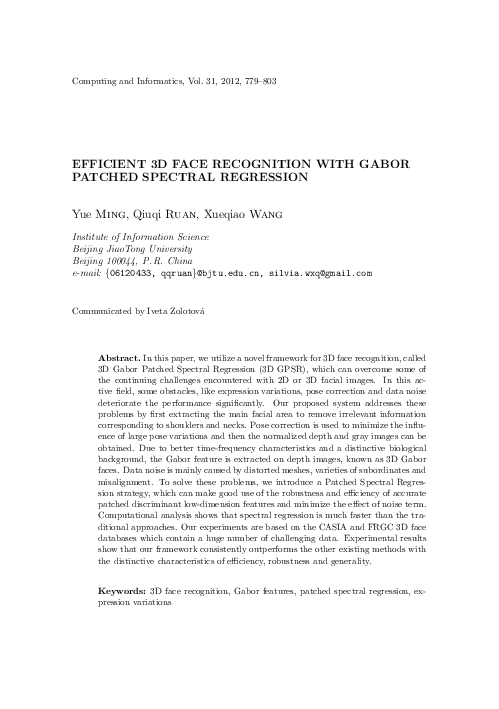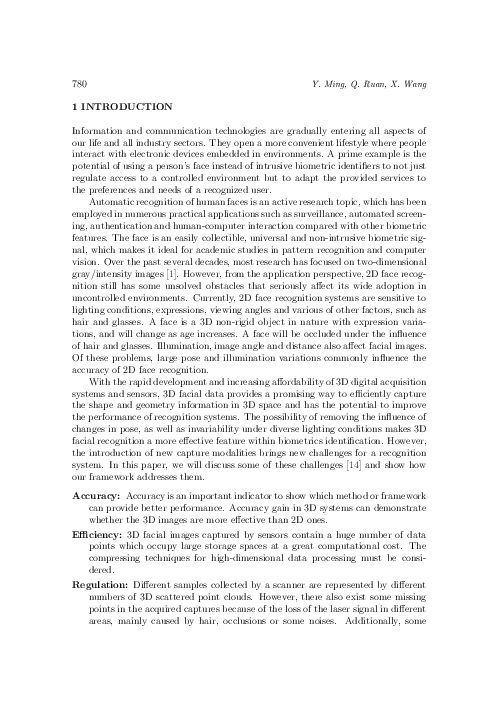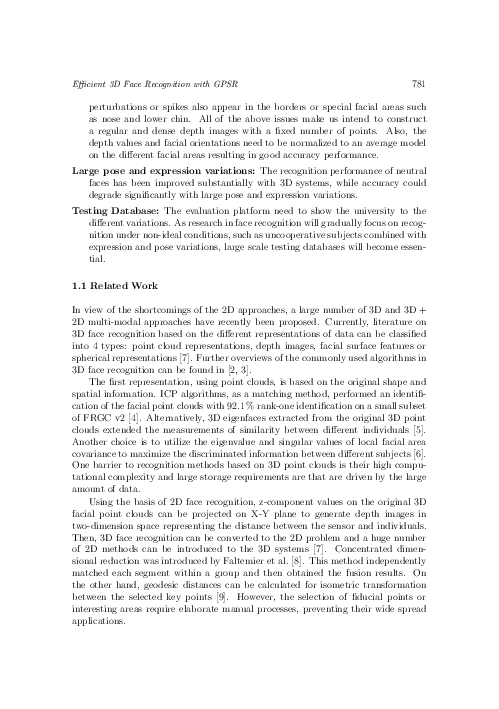Efficient 3D Face Recognition with Gabor Patched Spectral Regression
keywords: 3D face recognition, Gabor features, patched spectral regression, expression variations
In this paper, we utilize a novel framework for 3D face recognition, called 3D Gabor Patched Spectral Regression (3D GPSR), which can overcome some of the continuing challenges encountered with 2D or 3D facial images. In this active field, some obstacles, like expression variations, pose correction and data noise deteriorate the performance significantly. Our proposed system addresses these problems by first extracting the main facial area to remove irrelevant information corresponding to shoulders and necks. Pose correction is used to minimize the influence of large pose variations and then the normalized depth and gray images can be obtained. Due to better time-frequency characteristics and a distinctive biological background, the Gabor feature is extracted on depth images, known as 3D Gabor faces. Data noise is mainly caused by distorted meshes, varieties of subordinates and misalignment. To solve these problems, we introduce a Patched Spectral Regression strategy, which can make good use of the robustness and efficiency of accurate patched discriminant low-dimension features and minimize the effect of noise term. Computational analysis shows that spectral regression is much faster than the traditional approaches. Our experiments are based on the CASIA and FRGC 3D face databases which contain a huge number of challenging data. Experimental results show that our framework consistently outperforms the other existing methods with the distinctive characteristics of efficiency, robustness and generality.
reference: Vol. 31, 2012, No. 4, pp. 779–803


